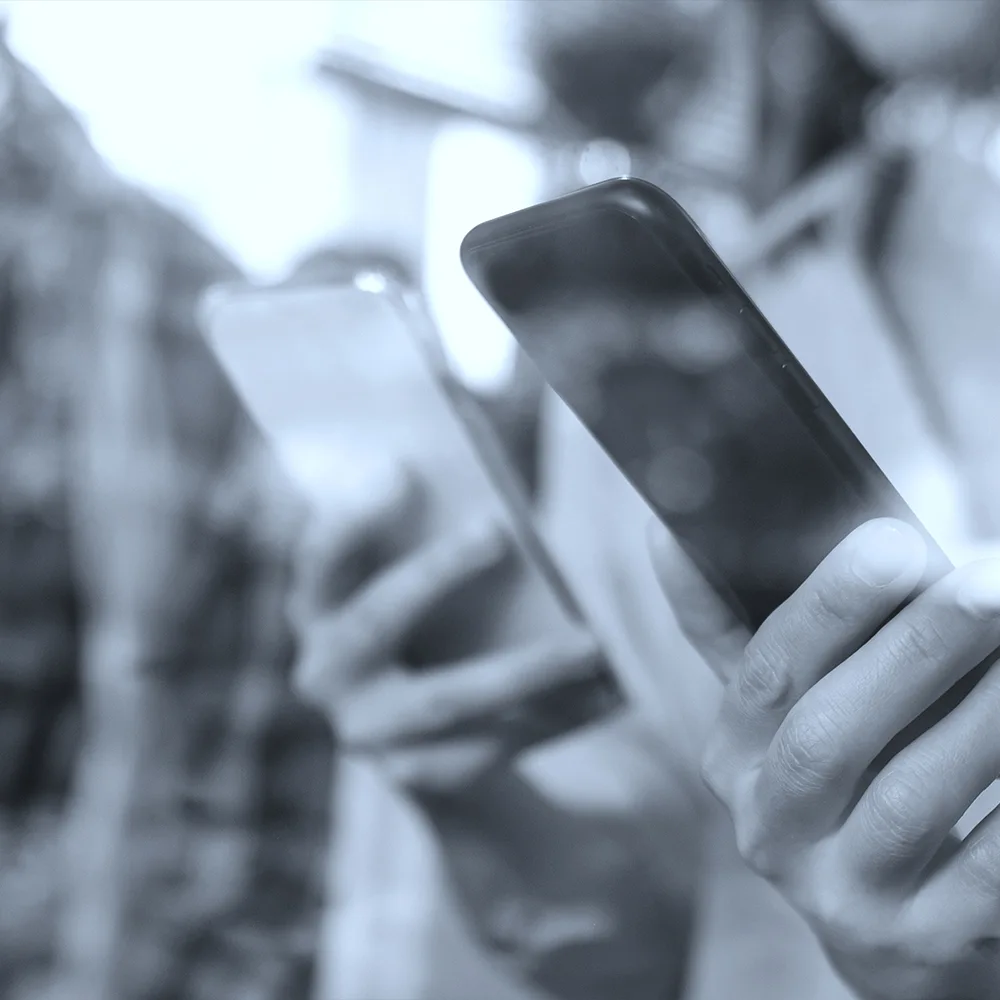Digital B2B communication
Digital B2B communication has changed the way companies communicate with each other. Through the right channels, industrial and technology companies can effectively reach global markets and strengthen their brands internationally. As a B2B marketing and branding agency, we provide support along the way.


DIGITAL B2B COMMUNICATION.
From digital evolution to digital revolution.
B2B communication — strategies and challenges in international markets
The digital transformation offers industrial and technology companies the opportunity to take their B2B communication to a new level. As a B2B agency for marketing and branding, we utilize the diverse possibilities of digital B2B communication, keeping an eye on the right channels and their effectiveness.
Digital technologies have revolutionized the way companies communicate in B2B markets. New ways have opened up for industrial and technology companies to market their products and services globally and interact with customers. And the momentum continues. There are constant developments, changes, and new opportunities for even more intensive communication — in acquisition and sales, but above all in ongoing collaboration.
Digital B2B communication is the key that opens the doors to global opportunities and builds bridges to boundless success.
Various channels and instruments are available with regard to the market and sales activities:
- Company website: The company website is and remains the digital business card that serves as a center for information and platform for content. For us as a B2B marketing and branding agency, it is the central content hub. This is where a company meets all its target audiences. This is where it directs interested parties to the relevant areas. This is where it triggers interaction and generates contacts.
- Email marketing: A well-maintained customer and prospect database is the be-all and end-all of email marketing. It is the source of effective communication that enables targeted messages and allows tailored offers to be sent to customers and prospects.
- Social media: Platforms such as LinkedIn, X (formerly Twitter), YouTube, Facebook, Instagram, WeChat, and others offer scope for a wide range of content, interaction, and networking. Success depends on the right choice of channels and content, as well as the engagement and commitment of brand ambassadors and employees in the company. The more users who are directly connected to the company interact with the company’s accounts, the greater the distribution.
- Content marketing: Creating and distributing relevant and valuable content is important in order to position yourself as an expert in international competition. Content is part of addressing target audiences effectively and precisely. And specialist content is particularly relevant, as it is less concerned with the challenges of intercultural aspects and more with providing qualified and useful information.
- Webinars and online events: In many cases, these virtual events are now a very effective means of sharing knowledge and reaching customers directly.
- Search engine marketing (SEM): Optimizing visibility in search engines through organic and paid results is an essential part of digital communication in B2B markets. Social media activities, blog posts, video series, and much more combine to boost organic visibility, which in our experience as a B2B agency for marketing and branding results in a higher trust advantage.
- E-commerce platforms: The direct sale of products and services via online stores or specific customer portals is the direct route to the customer, especially in the areas of after sales, maintenance, spare parts, and services.
Digital B2B communication enables more precise targeting, interaction, and real-time measurement. It is a key tool for having a global presence and serving international markets. However, it also presents the need to address cultural nuances and language differences to avoid misunderstandings.
In any case, it is important to develop the digital strategy that suits the B2B company and relevant market. From our point of view as a B2B branding agency, the digital strategy must of course fit in with the brand strategy and brand positioning, derive from them and pay into them them. Goal and strategy lead to designing and defining the right channels and tools to build an effective digital presence. Content creation, which is the creation of relevant content that demonstrates expertise and appeals to customers, is closely linked to this. The digital strategy also involves the international choice of channels and the adaptation of content that is adapted to different cultures and masters intercultural communication. This is then not about purely technical content, but about the company, employer branding, social responsibility, and sustainability.
Digital B2B communication offers industrial and technology companies a world of new opportunities to operate globally and interact with customers in a variety of ways. In an increasingly connected world, our expertise as a B2B marketing agency is invaluable in developing a tailored digital strategy and successfully addressing international markets.




